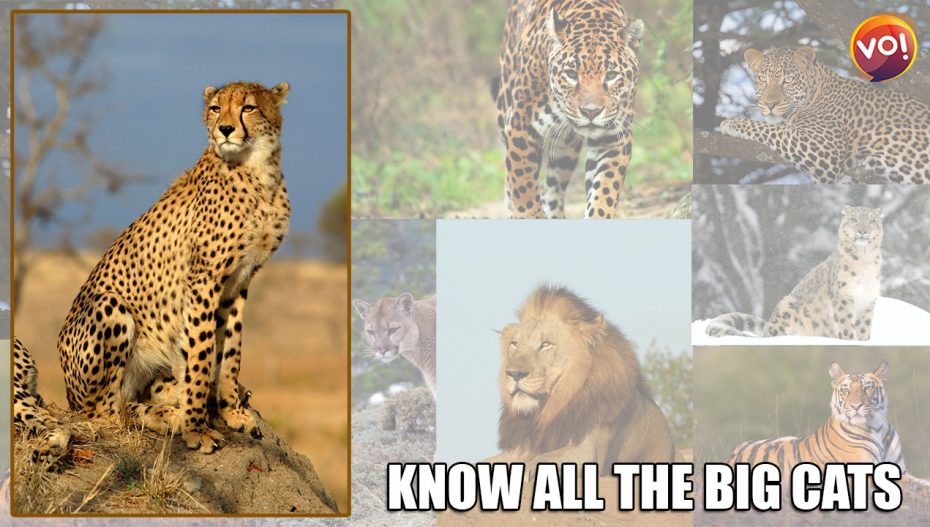The term “big cat” is typically used to refer to any of the seven living members of the genus Panthera, Puma and Acinonyx. Out of these seven, four were found in India till yesterday. Today, with PM Narendra Modi releasing cheetahs in Sheopur in Madhya Pradesh, India is now home to five of the seven big cats. This includes tiger, lion, leopard, snow leopard and cheetah. The two big cats still not found in India are the Jaguar and the Cougar.
Despite enormous differences in size, various cat species are quite similar in both structure and behaviour, with the exception of the cheetah, which significantly stands out from the other big and small cats. Interestingly, cheetahs are the most tamed of all wild cats. Except for breeding, they are very comfortable with human presence. All these seven big cats are carnivores and efficient apex predators.
It is estimated that the ancestors of most big cats split away from the Felinae about 6.37 million years ago. The Felinae, on the other hand, comprises mostly small to medium-sized cats, including domestic cats, but also some larger cats such as the cougar and cheetah. The snow leopard is the smallest of all the cats and the cheetah is the second smallest of all cats. The tiger is the biggest cat followed by the lion.
A 2010 study published in Molecular Phylogenetics and Evolution has given insight into the exact evolutionary relationships of the big cats. The study reveals that the snow leopard and the tiger are sister species, while the lion, leopard, and jaguar are more closely related to each other. The earliest big cat fossil, Panthera Blythe was discovered in southwest Tibet. It is estimated that the ancestors of most big cats split away from the Felinae about 6.37 million years ago. The Felinae, on the other hand, comprises mostly small to medium-sized cats, including domestic cats, but also some larger cats such as the cougar and cheetah.
Here is how to differentiate between the seven different Big Cats and a brief history of each of them.
Cheetah (origin: Acinonyx Jubatus)
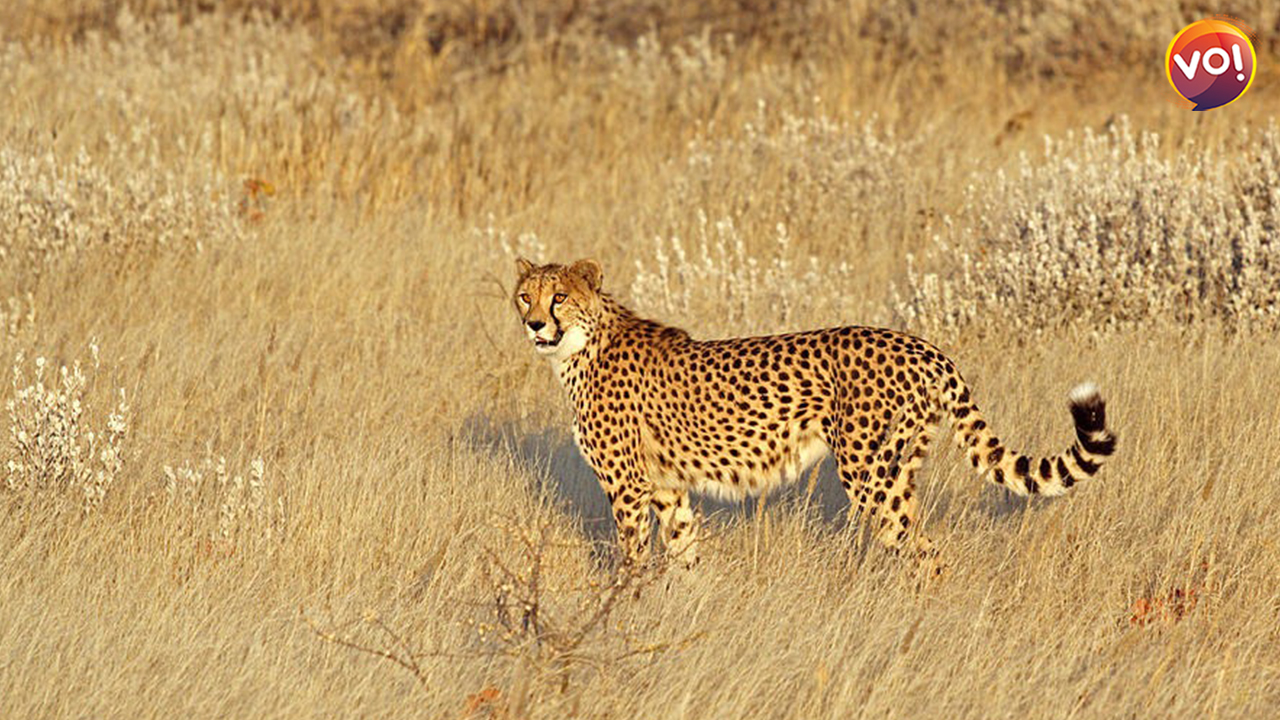
The Cheetahs are the fastest animal on the planet. They have now come to India 75 years after the last three cheetahs were hunted and killed in 1947 in a forest area which now falls in Chhattisgarh. In 1952, cheetahs were declared extinct in India. The cheetah is believed to have disappeared from the Indian landscape in 1947 when Maharaja Ramanuj Pratap Singh Deo of Koriya princely state hunted down and shot the last three recorded Asiatic cheetahs in India. The cheetah’s origin is in Africa and Iran. The cheetah’s speed is faster than a sports car. The cheetah is capable of running 128 kilometres per hour with long thin legs and tail helping it to navigate the land terrain. The second smallest of all cats, a typical adult cheetah weighs between 21 and 72 kgs. The cheetah has four subspecies.
The cheetah lives in three main social groups: females and their cubs, male “coalitions”, and solitary males. While females lead a nomadic life searching for prey in large home ranges, males are more sedentary and instead establish much smaller territories in areas with plentiful prey and access to females. The cheetah is active during the day, with peaks during dawn and dusk. It feeds on small- to medium-sized prey, mostly weighing under 40 kg. The cheetah typically stalks its prey to within 200 feet of distance and trips it during the chase and bites its throat to suffocate it to death. Cheetah breeds throughout the year. After a gestation of nearly three months, a litter of typically three or four cubs is born. Cheetah cubs are highly vulnerable to predation by other large carnivores such as hyenas and lions. They are weaned at around four months and are independent by around 20 months of age. Female cheetahs play very hard on males.
As of 2016, the largest population of nearly 4,000 cheetahs is sparsely distributed in Angola, Botswana, Mozambique, Namibia, South Africa and Zambia. In Asia, Cheetahs are only found in Iran after 1947. Now they have been brought to India. They travelled 8400 km from Africa to come to India
Tiger (origin: Panthera Tigris)
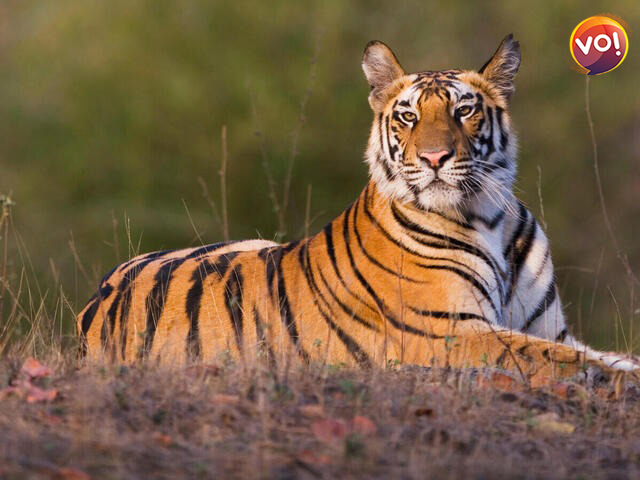
Tigers are the biggest and compete with leopards in beauty. Tigers are the heaviest amongst all the cats. They usually weigh at least 75 kgs and go up to 300 kgs of weight. The tiger is the largest living cat species and a member of the genus Panthera. It is most recognisable for its dark vertical stripes on orange fur with a white underside. An apex predator, it primarily preys on ungulates, such as deer and wild boar. It is territorial and generally a solitary but social predator, requiring large contiguous areas of habitat to support its requirements for prey and the rearing of its offspring. Tiger cubs stay with their mother for about two years and then become independent, leaving their mother’s home range to establish their own.
India has the largest number of tigers in the world. Most of them are found in the Bandhavgarh National Forest in Madhya Pradesh. The total number of tigers in the world currently is estimated to be less than 3,948. Tiger is the national animal of India even though many people mistakenly say it is a lion because of the lion figure in the Asoka Pillar and our emblem. Northwestern China is believed to be the origin of the tiger lineage. Tigers grew in size, possibly in response to adaptive radiations of prey species like deer and bovids, which may have occurred in Southeast Asia during the Early Pleistocene.
Since the early 20th century, tiger populations have lost at least 93% of their historic range and have been extirpated from Western and Central Asia, the islands of Java and Bali, and in large areas of Southeast and South Asia and China. What remains of the range where tigers still roam free is fragmented, stretching in spots from Siberian temperate forests to subtropical and tropical forests on the Indian subcontinent, Indochina and a single Indonesian island, Sumatra.
Tigers fall in the endangered list of animals. Besides India, Tiger is also the national animal of Malaysia, Bangladesh and South Korea.
The major reasons for the population decline of tigers are habitat destruction, habitat fragmentation and poaching. Tigers are also victims of human-wildlife conflict, due to encroachment in countries with a high human population density.
Lion (origin: Panthera Leo)

Known as the King of the Jungle, the lion is the most social amongst all cats and interestingly cannot live alone. Lions live in Prides. Gujarat’s Gir Forests is the only home to Asiatic Lions. In zoos, lions have been bred with tigers to create hybrids for the curiosity of visitors or for scientific purposes. The liger is bigger than a lion and a tiger, whereas most tigons are relatively small compared to their parents because of reciprocal gene effects. The leopon is a hybrid between a lion and a leopard. Lions can weigh anything between 100 to 250 kgs in weight. In India, increasing urban encroachment in Gujarat is compelling several lions to move out of their territories which is resulting in man-lion conflict. Otherwise, traditionally, lions were not known to attack humans.
Of the living felid species, the lion is rivalled only by the tiger in length, weight, and height. The male lion’s mane is the most recognisable feature of the species. It may have evolved around 320,000–190,000 years ago. The mane starts growing when lions are about a year old.
Among all cats, lions are considered to be the laziest. They are inactive for about twenty hours per day. Although lions can be active at any time, their activity generally peaks after dusk with a period of socialising, grooming and defecating. Intermittent bursts of activity continue until dawn when hunting most often takes place. They spend an average of two hours a day walking and fifty minutes eating.
Both males and females defend their pride against intruders, but the male lion is better suited for this purpose due to its stockier, more powerful build. Most lionesses reproduce by the time they are four years of age. In most cultures, the lion symbolises power and royalty.
The lion is arguably the most widely recognised animal symbol in human culture. Lions are classified in the vulnerable category.
Leopard (origin: Panthera Pardus)

The leopard is the closest relative of the jaguars. Compared to other wild cats, the leopard has relatively short legs and a long body with a large skull. Its fur is marked with rosettes. It is similar in appearance to the jaguar (Panthera onca) but has a smaller, lighter physique, and its rosettes are generally smaller, more densely packed and without central spots. Both leopards and jaguars that are melanistic are known as black panthers. The leopard is distinguished by its well-camouflaged fur, opportunistic hunting behaviour, broad diet, strength, and ability to adapt to a variety of habitats ranging from rainforest to steppe, including arid and montane areas. It can run at speeds of up to 58 km/h. The earliest known leopard fossils excavated in Europe are estimated to be 600,000 years old.
The largest cat in the Americas, the Jaguar has the strongest bite force of all wild cats, enabling it to bite directly through the skull of its prey. Melanistic (black) The Cat Classification Task Force of the Cat Specialist Group has recognized eight subspecies of the leopard. Out of these, the Arabian leopard is the smallest in size. In 1953, a male leopard and a lioness were crossbred in Hanshin Park in Nishinomiya, Japan. Their offspring known as a leopon was born in 1959 Attempts to mate a leopon with a tigress were unsuccessful.
The leopard is a solitary and territorial animal. It is typically shy and alert when crossing roadways and encountering oncoming vehicles, but may be emboldened to attack people or other animals when threatened. Adults associate only in the mating season. Females however are close to their offspring and maintain contact even after they are weaned off. Leopards can climb trees very skillfully, often rest on tree branches and descend from trees headfirst. While the interspecies killing of full-grown leopards is generally rare, given the opportunity, both tiger and lion readily kill and consume both young and adult leopards. In some areas, leopards mate all year round. Cubs are usually born in a litter of 2–4 cubs. The mortality of cubs is estimated at 41–50% during the first year.
Between 2002 and 2012, at least four leopards were estimated to have been poached per week in India for the illegal wildlife trade of its skins and bones. The Leopard of Rudraprayag killed more than 125 people; the Panar Leopard was thought to have killed more than 400 people. Both were shot by Jim Corbett.
Leopards are classified as vulnerable in India. They weigh up to 90 kgs and are considered to be the most beautiful and graceful of all cats. Melanistic leopards are called Black Panthers..
Snow Leopard (origin: Panthera Uncia)
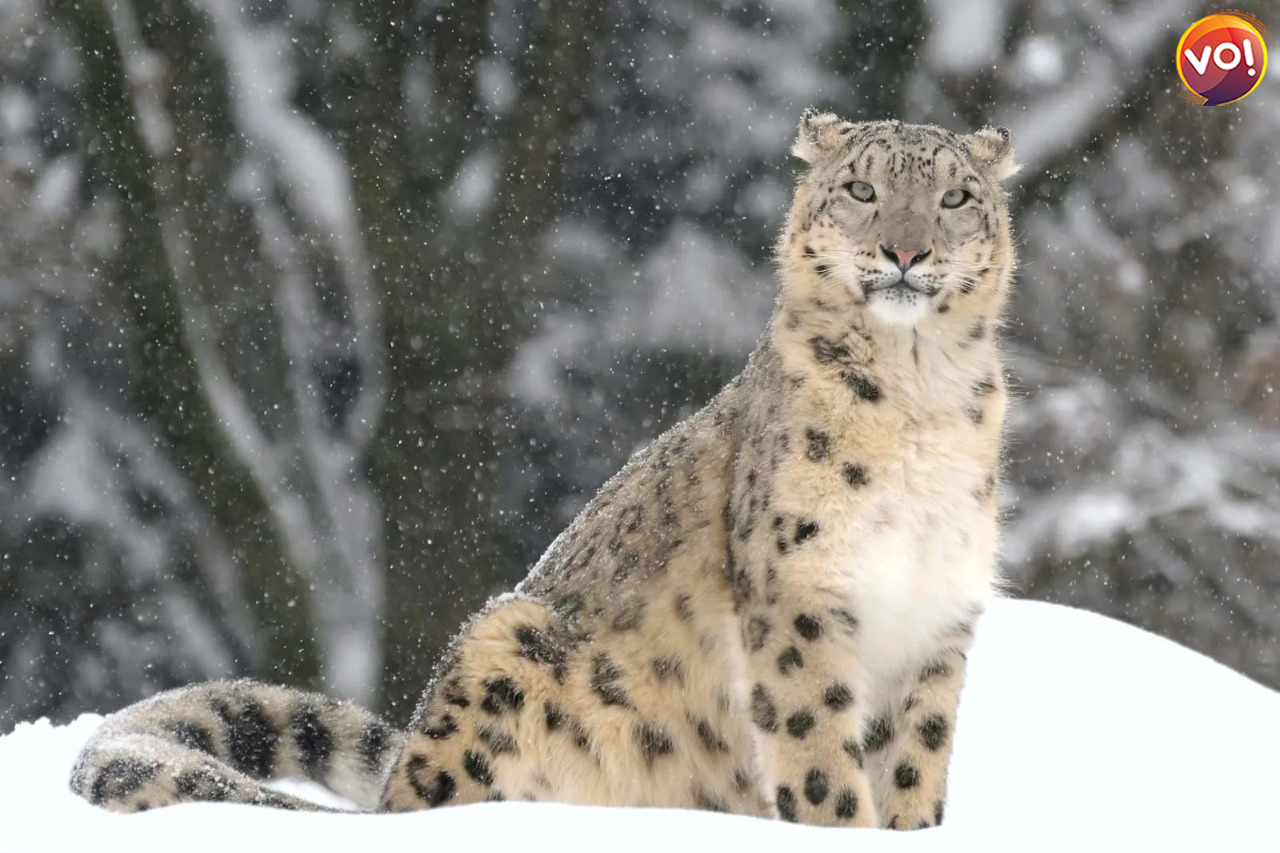
Found in Central and South Asia, the snow leopard is an exotic cat. The snow leopard is described as the most elusive of all the cats. It is estimated that there are about 600 snow leopards in India spread across 25 protected areas in Jammu and Kashmir, Ladakh, Uttarakhand, Himachal Pradesh, Sikkim and Arunachal Pradesh. A snow leopard cannot roar. The snow leopard is a solitary animal though they can survive on a single Himalayan blue sheep for two weeks before hunting again and one adult individual apparently needs 20–30 adult blue sheep per year. Snow leopards have been recorded to hunt successfully in pairs, especially in mating pairs. The snow leopard is capable of killing most animals in its range, with the probable exception of the adult male yak. It also eats a significant amount of vegetation, including grass and twigs. It has not been reported to attack humans, is easily driven away from livestock and readily abandons kills, often without defending itself.
In 2013, government leaders and officials from all 12 countries encompassing the snow leopard’s range (Afghanistan, Bhutan, China, India, Kazakhstan, Kyrgyzstan, Mongolia, Nepal, Pakistan, Russia, Tajikistan, and Uzbekistan) came together at the Global Snow Leopard Forum (GSLF) for its conservation.
The snow leopard has the longest tail amongst all leopards and is classified as vulnerable. It can weigh up to 55 kgs but there are thinner snow leopards also which weigh about 22 kgs.
Jaguar (origin: Panthera Onca)
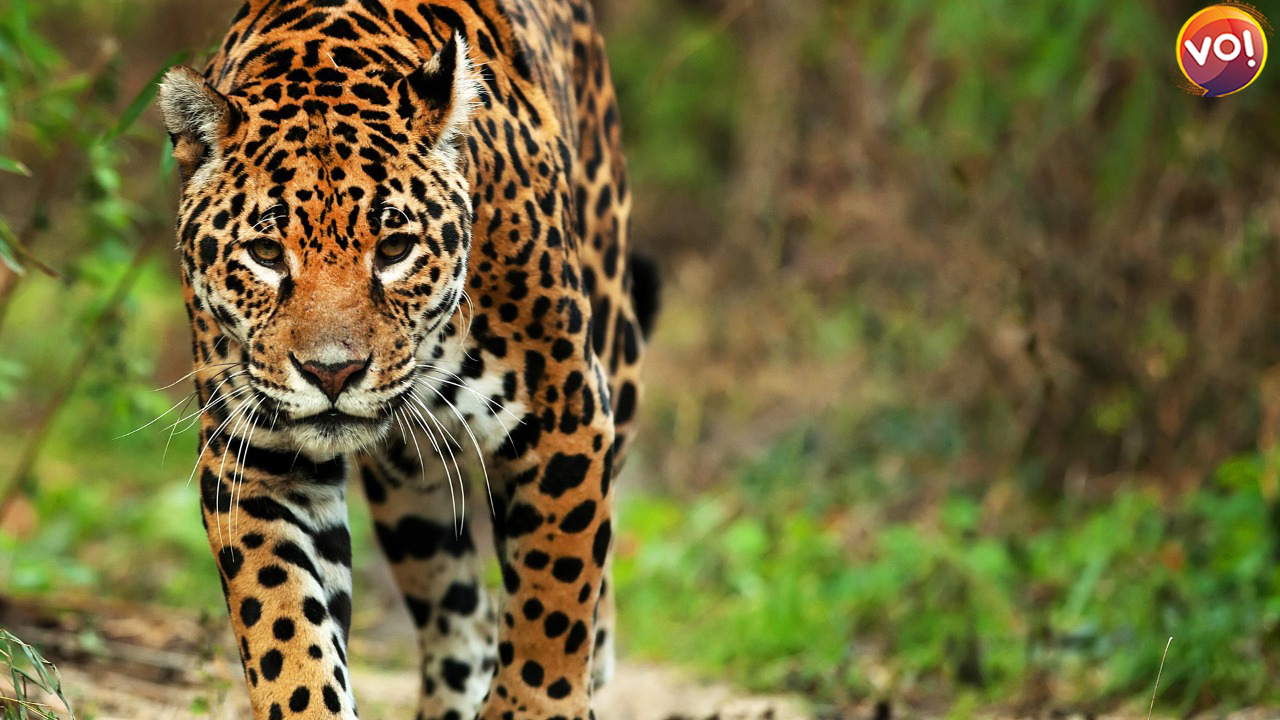
It is the largest cat species in the Americas and the third largest in the world. Its distinctively marked coat features pale yellow to tan coloured fur covered by spots that transition to rosettes on the sides, although a melanistic black coat appears in some individuals. The jaguar’s powerful bite allows it to pierce the carapaces of turtles and tortoises, and to employ an unusual killing method: it bites directly through the skull of mammalian prey between the ears to deliver a fatal blow to the brain. The jaguar has the strongest bite amongst all cats.
It is adept at swimming and is largely a solitary, opportunistic, stalk-and-ambush apex predator. As a keystone species, it plays an important role in stabilizing ecosystems and in regulating prey populations.
The jaguar is threatened by habitat loss, habitat fragmentation, poaching for trade with its body parts and killings in human-wildlife conflict situations, particularly with ranchers in Central and South America. It has been listed as Near Threatened on the IUCN Red List since 2002. Jaguars are not found in India.
Jaguars have been sighted in Arizona, New Mexico and Texas. Like black panthers, there are black jaguars also. The jaguar is generally solitary except for females with cubs. Jaguars have a good strong roar. A jaguar can weigh up to 110 kgs.
Cougar (origin: Puma Concolor)
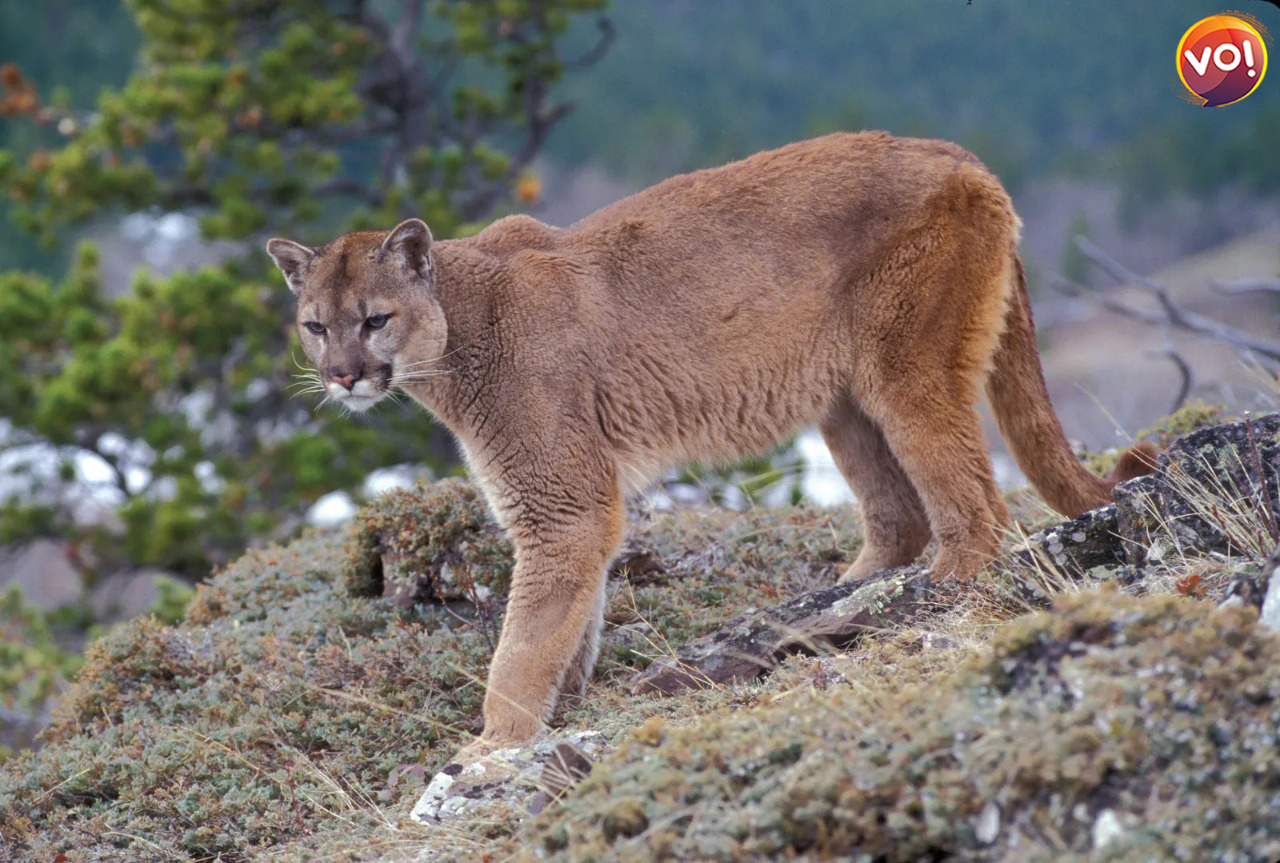
The cougar is the second-largest cat in the Americas.
Secretive and largely solitary by nature, the cougar is properly considered both nocturnal and crepuscular, although daytime sightings do occur. Despite its size, the cougar is more closely related to smaller felines, including the domestic cat.
The cougar holds the Guinness record for the animal with the greatest number of names, with over 40 in English alone. “Puma” is the common name used in Latin America and most parts of Europe. The cougar is an ambush predator that pursues a wide variety of prey. Primary food sources are ungulates, particularly deer, but it also hunts smaller prey such as rodents. It prefers habitats with dense underbrush and rocky areas for stalking but also lives in open areas. The cougar is territorial and lives at low population densities. Individual home ranges depend on terrain, vegetation and abundance of prey. While large, it is not always the apex predator in its range, yielding prey it has killed to American black bears, grizzly bears and packs of wolves. It is reclusive and mostly avoids people. Fatal attacks on humans are rare but increased in North America as more people entered the cougar habitat and built farms. The cougar has the largest range of any wild land animal in the Americas, spanning 110 degrees of latitude from the Yukon Territory in Canada to the southern Andes in Chile. Like almost all cats, the cougar is a mostly solitary animal. Only mothers and kittens live in groups, with adults meeting rarely.
Cougars can weigh up to 100 kgs. They are not found in India. Their status falls under the Least Concern category.


